Don MacGregor’s top tips for environmental portraiture
Environmental portrait photography Don MacGregor offers his best tips for creating environmental portraits of families
• September 2019 issue
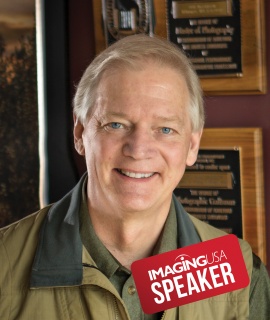
Don MacGregor will speak at Imaging USA 2020.
Working outside
At one time, environmental portraits were seen as an easy entry point into professional portrait photography. Photographers with even limited experience could take a family to a park, sit them in a scenic spot, and fire away. The good ones would know the value of photographing during the magic hour and employ posing and composition techniques to increase the quality of the images. Still, many images looked like snapshots. Cute, emotional, and fun? Yes. Polished, professional portraits? Not necessarily.
“It’s hard to get paid top dollar for something that looks like people could do on their own,” says Don MacGregor, M.Photog.Cr., CPP, API. Pros need to design images for their clients, composing a piece that tells a story while meeting the professional standards for a good photograph.
COMPOSITION
“It’s still a portrait,” says MacGregor. “It just happens to be outside. So it’s important to make the subject the main interest of the photograph and not overemphasize the environment.” For environmental family portraits, MacGregor calls attention to two primary considerations that will determine the effectiveness of the composition:
- The physical arrangement of the people.
- How the people relate to the scene.
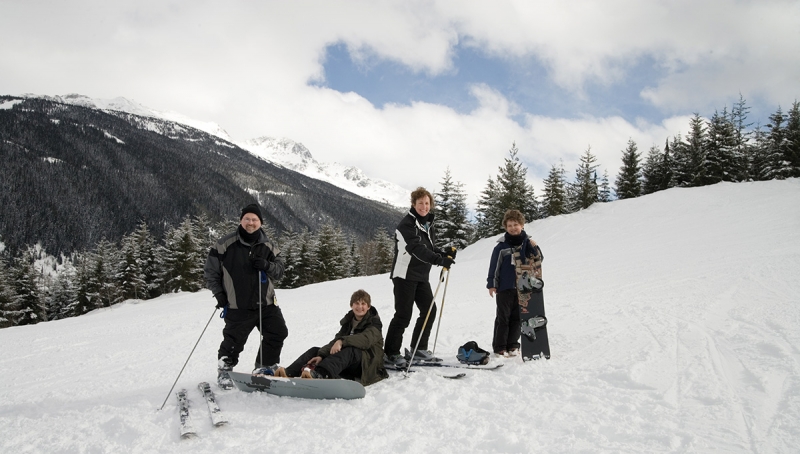
ARRANGE THE PEOPLE
People should appear comfortable and relatable while portrayed in a flattering way. To accomplish this goal, plan ahead. Consider the setting, the subjects, and how to design a composition that accomplishes your objective for the image.
Think about the design. Triangles and diagonal lines are extremely powerful for compositional design. Consider horizontal planes so not everyone is standing in the same line and compressing depth in the portrait.
Avoid lining up heads. Try not to put two heads side by side on the same level. This detracts from the depth of the image and makes people appear too stiff, as if they’re in a police lineup.
Don’t clump subjects. When everyone is mashed together, they appear less like individuals and more like stems protruding from a bunch.
Watch your perspective. Depth is good, but when you place people in too many different planes, some will appear much larger and others much smaller. Everyone in a family group should be equally showcased (unless you’re intentionally minimizing attention to something per the subject’s request).
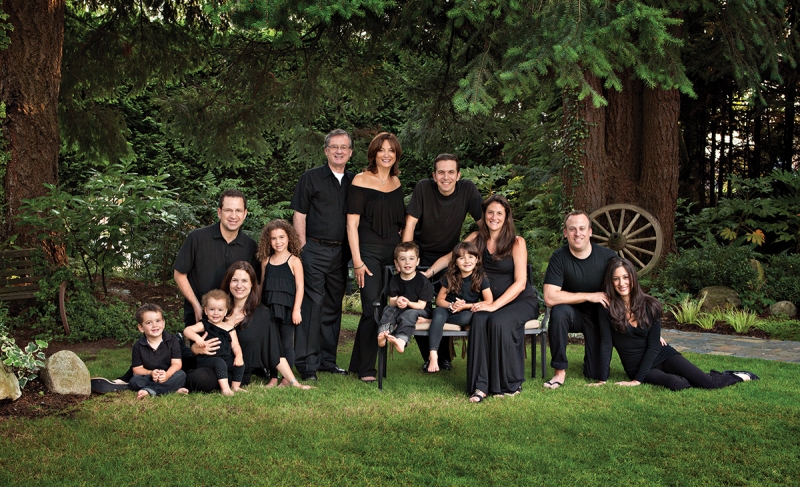
Relate people to the scene. Start by looking for a beautiful scene that holds significance to the subjects, suggests MacGregor. Then consider how to put people in that environment so they stand out and are the dominant part of the photograph. “Plan out the concept with as much detail as possible so when you’re in the field you can adapt easily to conditions that come up, keeping your focus more on the people and less on the environment,” he says.
When choosing your scene, consider emotional symbols that may be important to the client, says MacGregor. They come in four formats:
- Physical things in the background or elements of the scene that evoke emotion.
- Special places that elicit positive emotions for clients.
- Memories the client has that are inspired by the scene.
- Activities that people enjoy or that are part of the subjects’ personalities.
LIGHT
Light is often overlooked in environmental portraiture. It’s tempting to think that placing a subject in some open shade or photographing at dusk will provide ideal portrait lighting. And while that might be the case sometimes, you still need to be able to control the light for consistent, professional results.
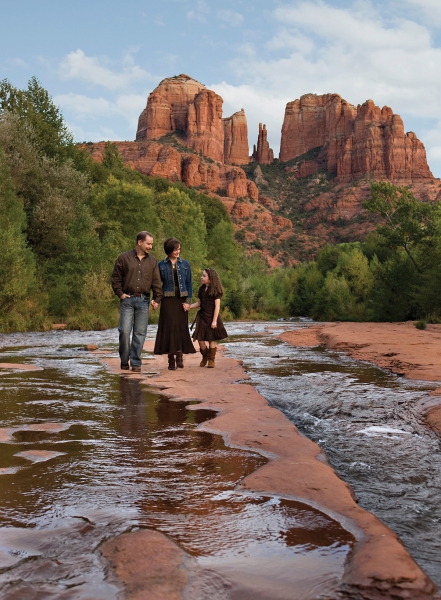
Watch your values. There are dramatic contrast ranges outdoors that cameras can’t handle so it’s important to compress the types of light in the scene to what the camera sensor can record. Essentially, you’re ensuring the camera can see information throughout the scene—foreground, middle ground, background. “You want to make sure there is an equal value of illumination on the subjects and where they are standing,” says MacGregor. “That’s how you create a sense of depth.”
Check your quality. The light falling on the subject should be consistent and not speckled or flared. “Find those high-quality conditions, which are often in open shade or where open light is blocked by a wall of trees.”
Go electric. Learn to use electronic flash outside, marrying electronic light to the quality of light outdoors. “Too often, the flash doesn’t match the scene—and the resulting image just looks like a flash photo,” says MacGregor. “You want the quality of the flash to be consistent with the overall scene.” For example, on a bright, sunny day with hard, high-contrast light, you can use hard, high-contrast flash lighting to match. But on an overcast day with more subtle contrast, adjust the power of the flash lighting to be more consistent with the mood and environment.
Light for the face. Make sure the light falling on your subjects’ faces is flattering and the shadows are falling in a way that creates depth without distraction. If the light falling on a subject isn’t good, move the subject. If you have a group and only half the people are in good light move the others until everyone is in good light. If there’s a reason you can’t move the group, then use flash to override the ambient light—essentially make it a flash photograph. To do this well, make the power of your flash greater than the sunlight but still consistent with the overall mood.
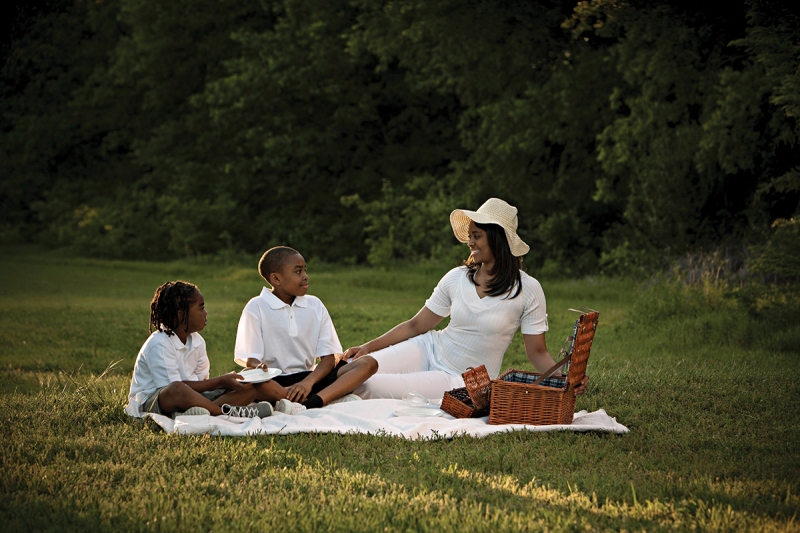
EXPRESSION
A key difference between a snapshot and a well-crafted portrait is attention to expression. Take the time to craft expressions that draw out the personality of the subject.
Exude the mood. “When I walk into these situations, I have to display the mood I want,” says MacGregor. “People will mirror your mood and enthusiasm. Walk in and exude positivity. Draw people out. If you’re more engaged, impassioned, they are going to respect you and trust you more.”
Educate. Throughout the session, explain what you’re doing and why you’re doing it, suggests MacGregor. “While I’m shooting, I give the clients a little lesson in photography. I explain that I’m not just taking a picture, I’m creating a personalized piece of art for them. When you relate your process to the clients, they start to mirror your enthusiasm. They start to have fun and enjoy the experience more. They lose their preoccupation with their insecurities, and they allow you to capture something more genuine.”
Collaborate. Ask for the subjects’ opinions and address objections in advance. Simple questions like, “Does that work for you?” can open up the process. It shows that you respect them and are interested in their concerns. In turn, they tend to relax, drop their guard, and collaborate with you to create the winning expression and emotion for the portrait.
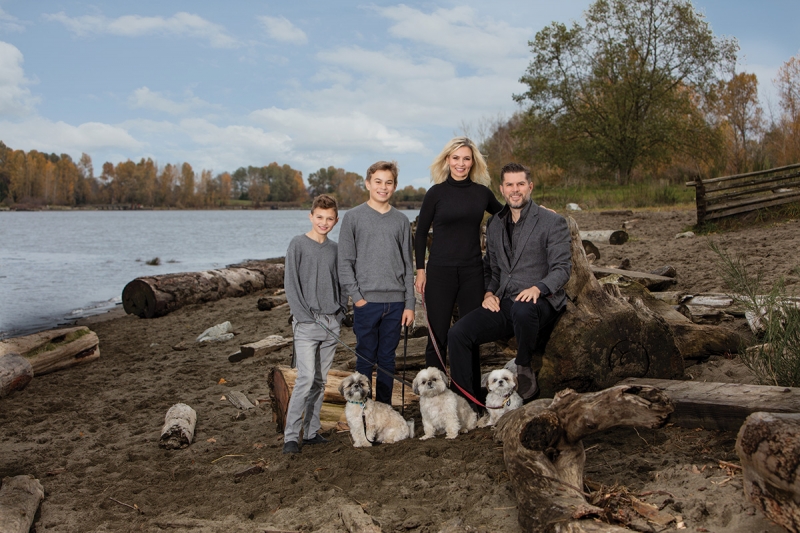
THE NEXT LEVEL
Respect is a central theme in MacGregor’s process, particularly when it comes to environmental portraiture. Because so many photographers do outdoor portraits—at widely varying levels—it’s important to build respect with clients as a means of establishing your professionalism.
“So much revolves around respect,” he says. “It begins during your first contact and then builds every step along the way. When you can demonstrate your professionalism and skill, the clients allow you to do more creatively. And it helps them trust you when making recommendations for the final images and purchases.”
Ultimately, MacGregor stresses that environmental portrait photographers need to up their game to set themselves apart and earn the respect—and dollars—of their clients. “To be successful, both artistically and financially, one has to create portraits that don’t look like snapshots—portraits that clients can’t do with their own camera by putting it on ‘P,’” says MacGregor.
“Photographers need to create a vision for their clients and get them excited about that vision. When you can do that effectively, then you’ve set yourself up for success.”
RELATED: Don MacGregor explains how to compose outdoor portraits that sell
Jeff Kent is editor-at-large of Professional Photographer

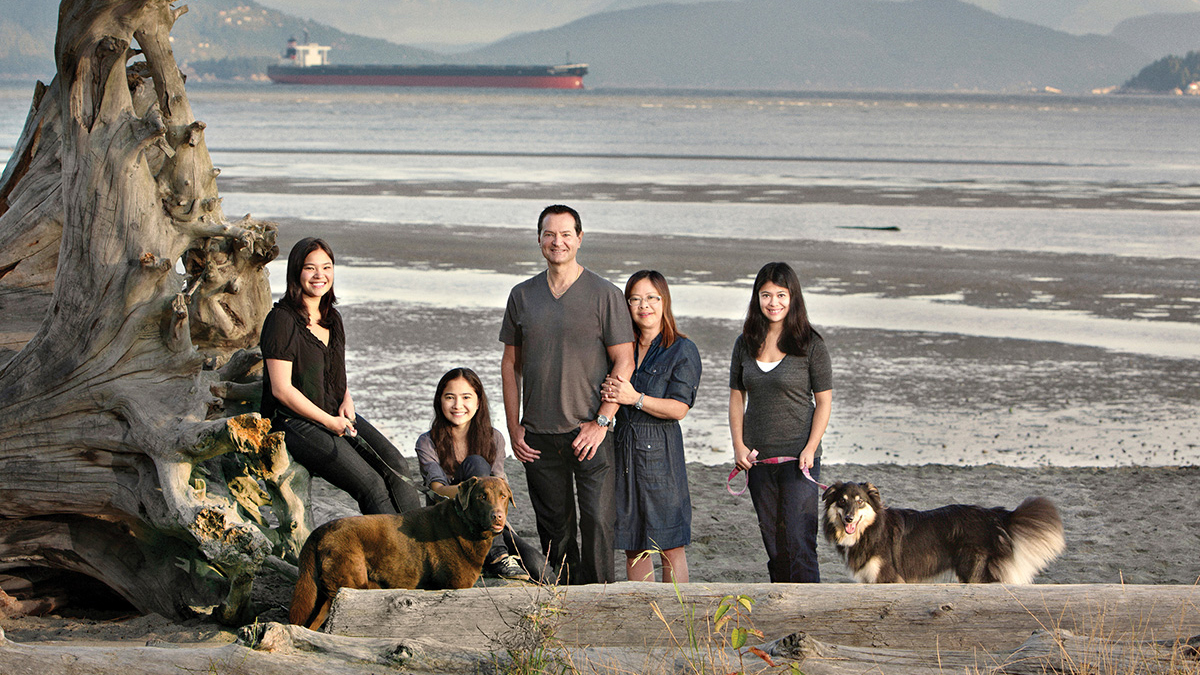
 View Gallery
View Gallery


